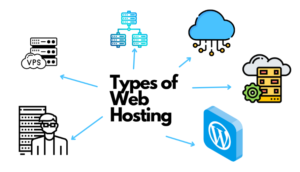
In the vast landscape of the internet, websites often undergo changes, such as URL restructuring, content removal, or page migrations. When these changes occur, webmasters face a critical decision: whether to implement a 301 redirect or display a 404 error page. Both options have their benefits and downsides, but understanding which is less harmful to your website’s search engine optimization (SEO) is crucial.
World of 301 redirects and 404 error pages, examining their effects on user experience, search engine rankings, and overall website health. By the end, you’ll be equipped with the knowledge and insights needed to confidently choose between the two options and optimize your website’s performance.
Table of Contents
What’s Less Harmful: 301 Redirects or “404 Error Pages”?
When it comes to handling changes on your website, the decisions you make can significantly impact its SEO and user experience. Let’s explore the differences between 301 redirects and 404 error pages to understand their respective implications.
301 Redirect: Seamless Navigation
A 301 redirect is a permanent redirect that indicates a web page or content has moved to a new location. When users or search engines access the old URL, they are automatically and seamlessly redirected to the new URL, preserving link juice and page rankings.
“404 Error Pages”: Dealing with Missing Content
On the other hand, a “404 Error Page” is what users see when they try to access a page that no longer exists or has been moved without a redirect. It informs visitors that the content they are looking for is unavailable.
Impact on User Experience
301 Redirect: Positive User Experience
From a user perspective, encountering a seamless 301-redirect is generally a positive experience. Users find the content they are looking for without disruptions, leading to improved user satisfaction and retention.
“404 Error Pages”: Potential Frustration
Encountering a “404 Error Page” can be frustrating for users as it presents a dead end. Users may leave your site if they cannot find the desired content, leading to a higher bounce rate.
SEO Implications
301 Redirect: Passing Link Juice
From an SEO standpoint, 301 is valuable as they pass the link equity from the old URL to the new one. This ensures that search engines transfer the ranking power, maintaining or improving your page’s search rankings.
“404 Error Pages”: Lost Opportunities
Having multiple 404 errors on your site can negatively affect SEO. Search engines interpret this as poor user experience and may reduce the crawl rate, potentially leading to a decrease in rankings.
Website Health and Indexing
301 Redirect: Healthy Site Structure
Using 301 redirects in a structured manner ensures that search engines can efficiently crawl and index your website, leading to better visibility and organic traffic.
“404 Error Pages”: Crawling Challenges
Having too many “404 Error Pages” can create crawling challenges for search engines. If a substantial portion of your website is not indexed, it may hinder overall organic traffic and visibility.
When to Use Each Option?
301 Redirect: Ideal Scenarios
Use a 301 redirect when you’ve permanently moved a page to a new location, restructured your website, or want to consolidate multiple pages with similar content. It is also suitable when you change your domain or need to redirect traffic from an outdated URL.
“404 Error Pages”: Appropriate Situations
Display a custom 404 error page when the content is genuinely missing, and you have no suitable replacement. This page should guide users to other relevant sections of your website and encourage them to explore further.
The Middle Ground: Soft 404
A “Soft 404” is an error page that appears to be a 404 page, but it returns a “200 OK” status code instead of the standard “404 Not Found.” This can confuse search engines and negatively impact your SEO efforts. Avoid soft 404s by correctly implementing either a 301 redirect or a standard 404 error page.
Wrap-up
Both 301 redirects and “404 Error Pages” play crucial roles in maintaining a healthy website and preserving SEO efforts. Choosing between them depends on your specific website changes and content availability. Implementing 301 redirects for permanent moves and creating custom 404 error pages for missing content can significantly improve user experience and positively impact your website’s search engine rankings. Strive for a user-friendly approach to ensure visitors can easily navigate your site and find the content they seek.
Remember, a well-maintained website not only benefits your users but also helps search engines recognize the value you offer, ultimately leading to higher rankings and increased organic traffic.
Read more about link building stratergies
FAQ’s (Frequently Asked Questions):
what is a 301 redirect?
Yes, while 301 redirects are intended for permanent moves, they can be used for temporary changes. However, it is advisable to use a 302 redirect for temporary situations, as it tells search engines that the move is temporary, preserving the original URL’s ranking.
How do I create custom 404 error pages?
Creating a custom 404 error page involves designing a user-friendly and informative page that explains the content’s unavailability and provides alternative navigation options. You can create it in HTML or your content management system (CMS).
Do 301 redirects affect page loading speed?
Minimal impact is expected on page loading speed when using 301 redirects. However, excessive redirects or redirect chains may lead to some delay. Ensure efficient redirect management to mitigate any negative impact.
Can I use a 301 redirect and a custom 404 page together?
Yes, in some cases, it’s appropriate to use both options. For instance, when permanently moving a page, implement a 301 redirect. If the new page’s content doesn’t precisely match the old page’s intent, use a custom 404 page to guide users to relevant content.
Should I redirect all 404 error pages?
Not necessarily. Some 404 error pages may occur due to visitors mistyping URLs or outdated external links. In such cases, redirecting may not be necessary. Focus on redirecting important pages with significant backlinks and traffic.
Can 404 errors impact my search rankings?
Yes, if your website has a large number of unresolved 404 errors, search engines may interpret it as poor user experience and may impact your search rankings.
In which scenario is using a 301 redirect preferred over a canonical link?
You should use a 301 redirect instead of a canonical link in the following scenarios: • • Permanently moving a URL
• Consolidating multiple URLs
• Changing domain names
• Updating URL structure
• Preserving backlinks and SEO value
A 301 redirect is preferred over a canonical link in these scenarios because it informs search engines and users that the content has permanently moved to a new location, avoids duplicate content issues, ensures that search engines index the preferred URL, and preserves SEO value






